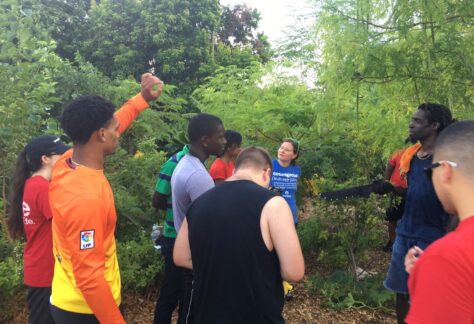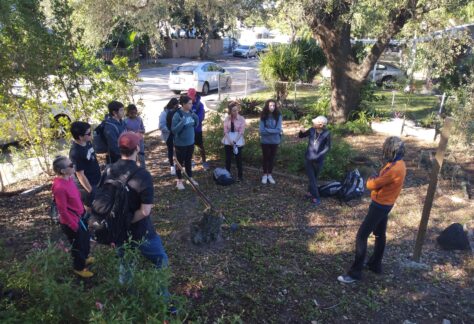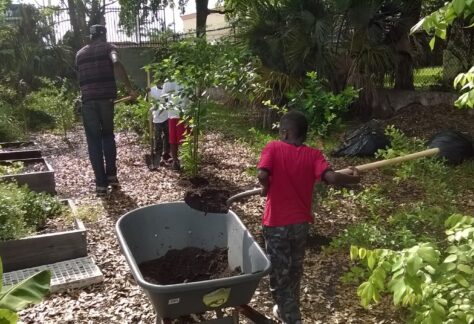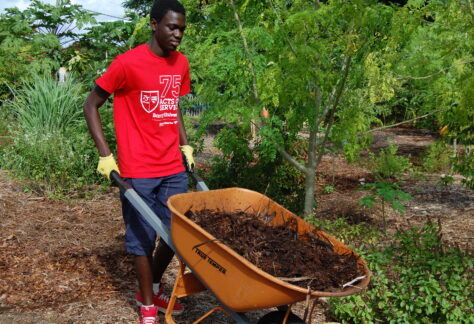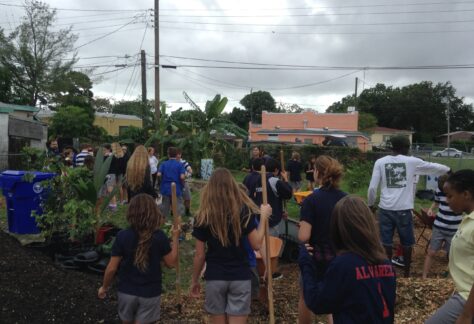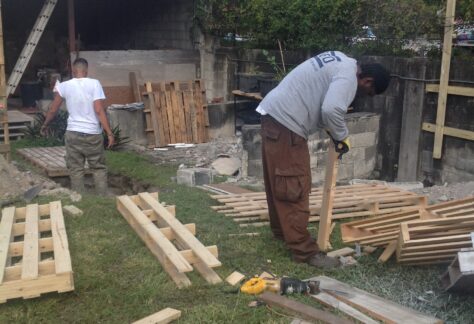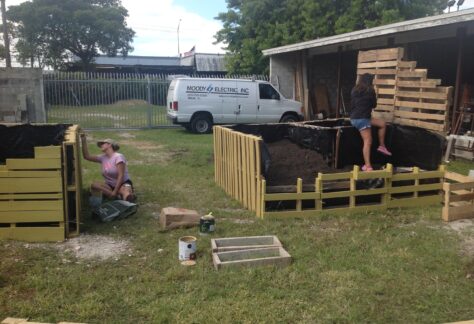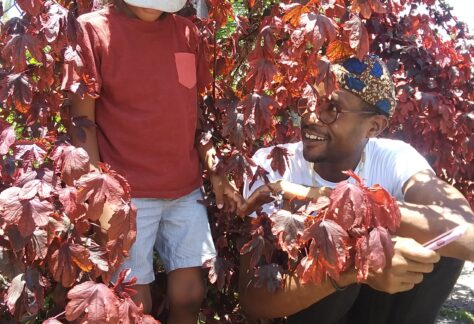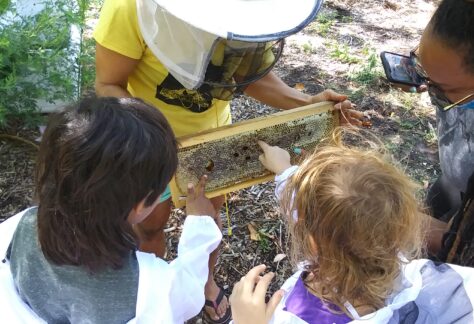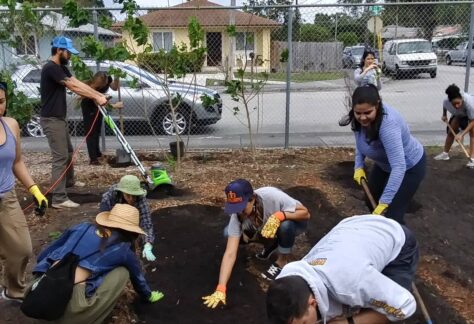The 360
GreenPrint
In most urban centers one finds a direct correlation between wealthy neighborhoods and the quality and density of tree canopy cover: the greater the cover the wealthier the neighborhood. Which means, in America’s poorest urban neighborhoods there is little or no overhead shade. The streets are hot and residents are reluctant to walk or bicycle or spend time outdoors.
“Hammocks in da Hood” addresses two main problems: the growing heat island effect in core urban neighborhoods, and the destruction of the regions native plants and wildlife from both development and the widespread use of exotic plants for landscaping.
We educate local residents in the importance of native ecology, and the ecosystem that their neighborhood consists of. The end result: more canopy cover in core urban neighborhoods, cooler streets, higher recharge rates for urban aquifers, more youth educated in science and natural processes, and the proliferation of plant and animal diversity throughout local regions.
Today’s food supply chain is dominated by the industrial agriculture system that rewards growing practices that deteriorate our soil health and other environmental factors.
These systems compartmentalize natural resources and focus on the yields of individual crops, whereas The 360 GreenPrint focuses primarily on natural resources as a means to desired yields, as mentioned in our food security page.
The future of food
“We are watching the soil systems and creating remedies for them, while using natural resources to maintain the health of the body.”
360 GreenPrint is very intentional to reverse the decreasing farmer-population trend and increase today’s farmer population by 600% before 2030. The more people (of all ages) that develop farming skills and become more nutritionally and environmentally literate – the more individuals, families and communities can supply much more (if not all) of their own essential food needs as a result – which means less of a necessity to rely on the industrial food supply chain, a system that continues to deplete our planet’s natural resources!
The 360 GreenPrint was formed by automating the expertise of the team’s grassroots experiences over the years as public health experts, urban farmers, and naturalists into an operational design.
The use of technology continues to be an integral component in UGW’s development of digital platforms for direct farmers to consumer logistics going forward.
The design is adaptable to varying geographic regions and addresses our core mission and vision of improved planetary & human health.
Click each tab below to learn more about the 4 components of the 360 GreenPrint.

Cerasee Farm
In order to reach the goal of increasing the farmer population by 600%, it will take individual and collective involvement to become more literate in agriculture and develop the actual gardening/farming skills to put the intention to use.
Each US state and Canadian province have a master gardner’s program that covers many similar subjects within the curriculum(s). UGW’s farm training delves deep into soil health, adaptive regenerative agriculture techniques which promotes and supports vital improvements to the planetary ecosystem.
Whether you’re a group or individual looking to:
- Volunteer time
- Accumulate hours towards a local master gardener certification, or to
- Enroll in UGW’s own Organic Farmer Training Course,
The 360 GreenPrint offers a variety of options of in-depth farming education and instruction, towards the efforts of growing the farmer population.
*Spin farming, raised garden beds and planting native flora images here*

Carbon Footprint Reduction
Connection to Zero-/waste initiatives – Access to outlets for:
- Recycling/Composting: connecting residents, restaurants, commercial establishments.
- Energy efficiency and reusable materials (solar power, biodegradable, etc.)

Community Engagement
Information Coming Soon

Farmer Connective Systems
Farmer-Centric Supply Chain Management (and Marketplace)
Certain factors such as a significant rise in demand for agricultural products, adoption of modern agricultural techniques, surge in adoption of blockchain technology, government initiatives and more are driving the growth of the market in more than one way.
As digital advancements continue to emerge in the agricultural space, UGW over the years have integrated technologies that allow us to strengthen our relationships with farmers, retailers and consumers, including:
- Digital map
- Distribution/Logistics platform for our farming and retail partners, and their consumers. UGW is anticipated to launch its consumer-facing version to this platform by Spring of 2023.
-

Cerasee Farm -

Carbon Footprint Reduction -

Community Reach -

Farmer Connective Systems
In order to reach the goal of increasing the farmer population by 600%, it will take individual and collective involvement to become more literate in agriculture and develop the actual gardening/farming skills to put the intention to use.
Each US state and Canadian province have a master gardner’s program that covers many similar subjects within the curriculum(s). UGW’s farm training delves deep into soil health, adaptive regenerative agriculture techniques which promotes and supports vital improvements to the planetary ecosystem.
Whether you’re a group or individual looking to:
- Volunteer time
- Accumulate hours towards a local master gardener certification, or to
- Enroll in UGW’s own Organic Farmer Training Course,
The 360 GreenPrint offers a variety of options of in-depth farming education and instruction, towards the efforts of growing the farmer population.
*Spin farming, raised garden beds and planting native flora images here*
Connection to Zero-/waste initiatives – Access to outlets for:
- Recycling/Composting: connecting residents, restaurants, commercial establishments.
- Energy efficiency and reusable materials (solar power, biodegradable, etc.)
Information Coming Soon
Farmer-Centric Supply Chain Management (and Marketplace)
Certain factors such as a significant rise in demand for agricultural products, adoption of modern agricultural techniques, surge in adoption of blockchain technology, government initiatives and more are driving the growth of the market in more than one way.
As digital advancements continue to emerge in the agricultural space, UGW over the years have integrated technologies that allow us to strengthen our relationships with farmers, retailers and consumers, including:
- Digital map
- Distribution/Logistics platform for our farming and retail partners, and their consumers. UGW is anticipated to launch its consumer-facing version to this platform by Spring of 2023.

